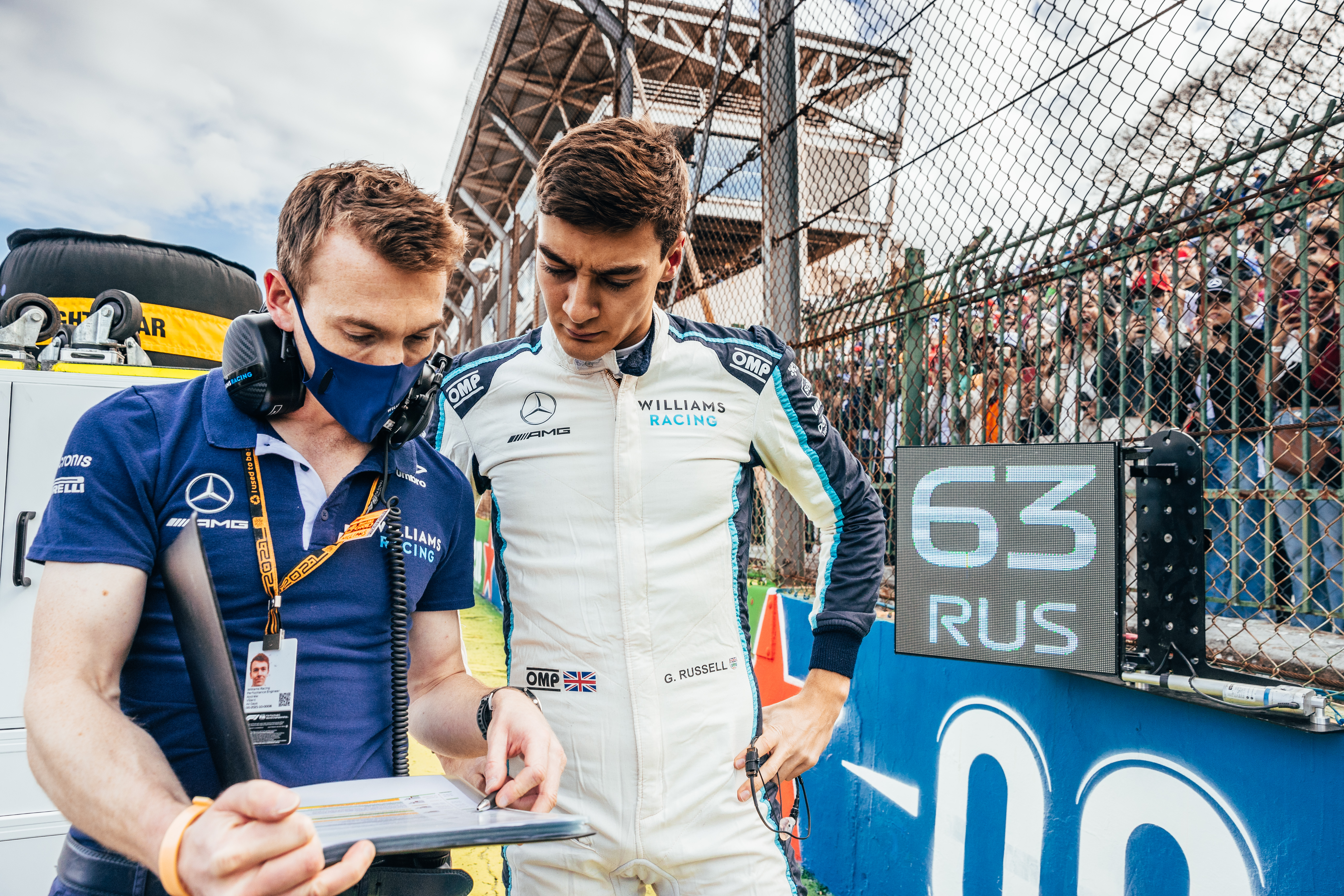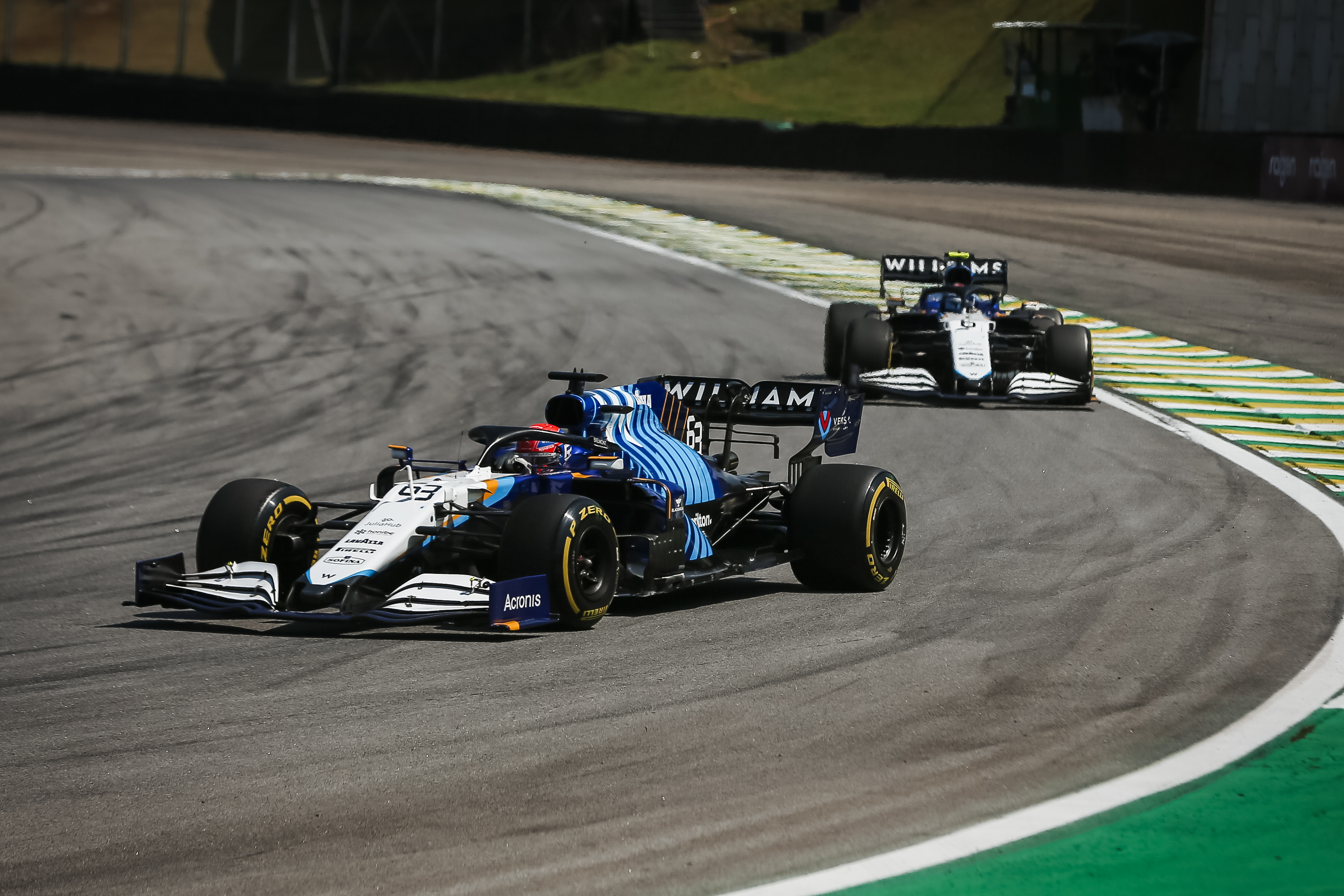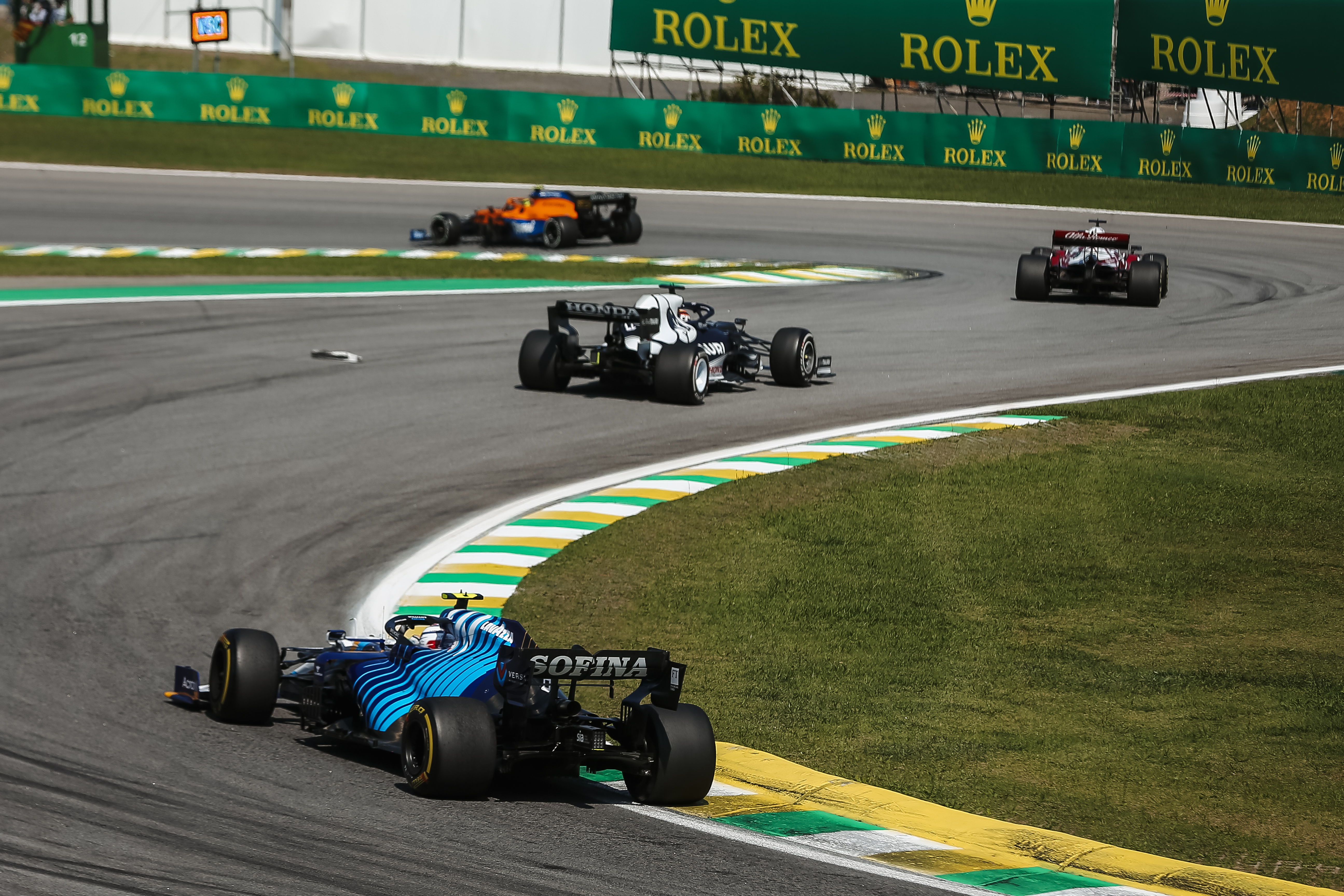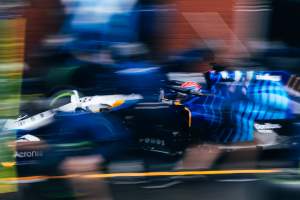Up Next

Across five mid-season Formula 1 races stretching from Hungary to the Russian Grand Prix, Williams racked up 23 points, a second-place finish and a third on the grid.
But following what George Russell called the team’s “golden spell”, Williams has endured its least competitive run of the season.
The recent races in the United States, Mexico and Brazil have included three of the four biggest Williams deficits to the outright pace, eclipsed only by the Hungaroring where it struggled badly in qualifying.
Interlagos was only the second time that neither Williams driver has reached Q2, following a similar performance in Hungary – although thanks to the first-corner chaos in that race and a change in conditions, the team got both cars home in the points at the Hungaroring.
Interlagos was only the second time Russell has failed to escape Q2. He followed up qualifying 17th with a 13th place finish after making an early stop under the safety car. Team-mate Nicholas Latifi had run ahead of him, but his pitstop under the virtual safety car led to him dropping off the back of the pack, coming home 16th ahead only of the two Haas drivers.
“We went through a golden spell, but equally we probably didn’t understand where that came from,” said Russell after the sprint race in Brazil.

“But it’s gone from one extreme to the other now. We’ve got some small indication of what it may be and we need to go to Qatar and reassess. Coming down in altitude, whether that’s been a factor we don’t know.
“But we recognise we’ve taken a bit of a step backwards and I’m struggling for confidence in the car at the moment, especially on a Saturday afternoon. I need that confidence to go out there and deliver and I feel like I haven’t delivered anything special in quite a while.”
Speaking after the main race, Russell said that he struggled in particular in the last stint when he was getting pick up on the tyres that “seems to affect the aerodynamics of the car quite a lot”.
He also drew a comparison with Hungary where a “180-degree shift in the wind” turned the car from “feeling terrible to really strong”. The wind sensitivity has been a problem for Williams all season, and there were gusty conditions in qualifying at Interlagos.
In Mexico, Russell was 13th-fastest in qualifying so showed reasonable pace, but in the race itself both drivers endured a race of extreme management thanks to struggling for cooling in the lower-density air at high altitude
“We did struggle a bit in Mexico,” said head of vehicle performance Dave Robson when asked by The Race about the team’s struggles.
“We probably didn’t have as much power unit cooling as we would have liked in the relatively hot conditions and that caused us some issues on Sunday. Although we could manage it the knock on effects on the tyres and general pace were not good, so I think that’s most of the issue there.
“[In Brazil], we probably didn’t get as much out of the first practice session in terms of the pace and set-up as we’d done at the previous two sprint events, so went into qualifying a bit further behind than expected.
“And we never really got it hooked up [in qualifying] and couldn’t get everything out of the car, particularly in the middle sector with those low and medium speed corners that don’t play to the strengths of the car.”

Robson suggested that the weaknesses in the middle sector at Interlagos were thanks to the fundamental characteristics of the car on top of the struggles getting the set-up right in the one practice session.
But he does not believe that the altitude at Interlagos, which is similar to the Red Bull Ring where Williams was much stronger with around half the pace deficit to the front, was a problem. Unlike in Mexico, where it contributed to the cooling problems, there were no major altitude-related problems in Brazil.
However, with Interlagos at an altitude of around 700 metres that does equate to a reduction in air density of approximately 7%, which Robson conceded does make it a little more difficult in terms of set-up because the downforce ceiling of the Williams is lower than that of the majority of its rivals.
“It is true that generally at higher altitude, as the air density reduces there is an element of the rich getting richer so the value of every bit of downforce you’ve got increases,” said Robson. “That was very evident in Mexico.
“In terms of altitude it’s very similar to Austria but the layout of the circuit is a bit different. We were fairly strong in Austria but in that middle sector [in Brazil] we’ve struggled and the wind does play a part on that.
“The altitude is not so much of an issue here. Everything is under control here [in terms of altitude] so it really is Interlagos not suiting the strengths of the car. If you took it to sea level, it would not be much different.”

It’s also worth noting that the strong performances of Williams were generally in exceptional circumstances. The first-corner crashes in Hungary and the wet conditions in qualifying at Spa and Sochi explain its strongest results, although Russell was able to pick up minor points finishes at Monza and Sochi.
The fact Williams has had a car in Q2 in 17 out of 19 races is as much a testament to Russell’s extraordinary qualifying abilities and the team doing a good job the get the most out of a limited car.
So while it’s likely Williams could do a little better in the season-ending run of races in the middle east, there’s no reason to expect miracles from a team that has, after all, had the ninth-fastest car on average this season.






